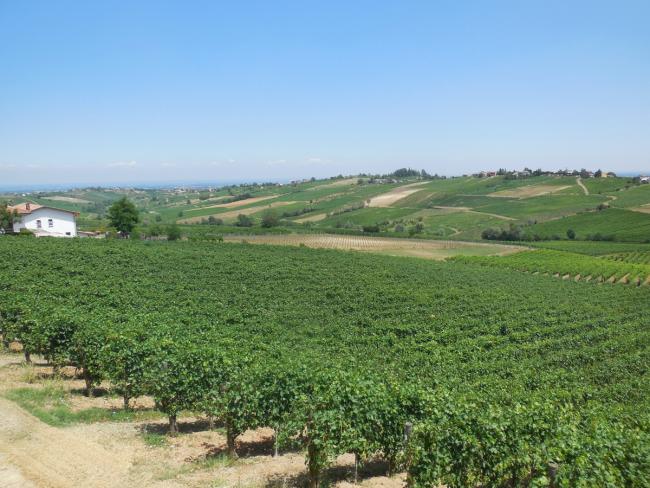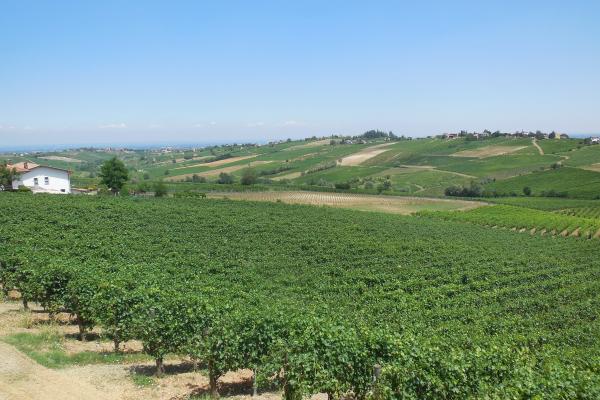Efficacy of vineyard ecosystem as Carbon sink: the case study of the Piacenza area

VinCapTer project aims to assess vineyard's capacity to stock atmospheric Carbon ingrapevine organs and soils in the Piacenza area. General aim is the evaluation of vineyard's net Carbon balance (tC ha-1year-1) as a function of soil environments, floor management and vigor. Guidelines for sustainable vineyard management in the study area will be the final output of the project.The project pursues an overall evaluation of vine and soil potential role as C-Stock elements in order to identify soil management practices increasing environmental and economical sustainability in vineyard.
1) monitoring of C-sequestration in representative vineyards and soils; 2) evaluation ofvineyard C-stock depending on different floor management; 3) study of cover-crops and vigor effects on soil organic matter and vine performance; 4) LCA of grape production and definition of guidelines for developing a C-sequestering sustainable viticulture
The action aims to: 1) planning field trials and data collection; 2) produce an exhaustive literature review on net vineyard ecosystem productivity and carbon stocked in the grapevine, in the soil as well as in the cover crops aiming to improve knowledge on project topics. 3) describing vineyard floor management at the beginning of the project in order to create a database that will be used as part of subsequent LCA. Data will be collected by specific questionnaires and outcomes will be used to delineate effective soil management practices for an improved carbon stock in vineyard.
Based on the OG network, the action aims to produce a quali-quantitative analysis of soilCarbon content considering two different floor management strategies ("bare soil" and "cover crop"). Systematic sampling will be carried out for describing the main soil properties as well as for implementing the Soil Regional database. Chemical analysis are scheduled at the beginning and at the end of the project in order to assess the effects of different floor management on soil carbon content in surface and deep layers as well as the its C-stock capacity.
In order to evaluate the effects of different floor management on vineyard Net Primary
Production (NPP), carbon stored in biomass will be assessed in each representative site and farms associated to the OG. The evaluation will compare the two following treatments: "bare soil through continual cultivation" and "permanent cover crop". NPP will be assessed by summing the above and below ground biomass as divided in 4 principal categories 1. biomass resulting from periodic mowing in the cover cropped treatment. 2. biomass associated to leaves (at fall) and annual wood (at winter pruning). 3. biomass stored in perennial woody organs and roots. 4. biomass stored in bunches. Outcomes will allow to understand vineyard C-stock capacity and relationships existing between agronomical and enological performance.
The task aims to assess: a. the effects of different vineyard floor management on Net Carbon Stock (NCS) as a function of the following treatments: bare soil through continual cultivation, permanent native cover crop, bare soil through continual cultivation every second row, permanent sown cover crop; temporary sown cover crop every second row; b. vigor class (high and low). The biomass produced during growing season will be measured.
Outcomes will allow assessing the vineyard C-Stock potential under different vineyard floor management strategies and vigor conditions.
In this action the evaluation of inputs and environmental impacts of vineyard floor management will be carried out through LCA (Life Cycle Assessment ISO 14040) methodology. Database on vineyards’ management and performance will be composed by:
1. information collected through the enquiry set up in "action 1"; 2. experimental data collected as part of field activities. LCA analysis will be carried out in each farm associatedto the OG and based on both floor management strategies ("bare soil" and "cover crop").
Due to different pedological origin characterizing experimental plots, the study will also include some comparison among different sites. In case of farms involved in Action 4, the LCA analysis will be also applied to different floor management strategies and vigor classesin order to assess their carbon footprint. The main impacting elements on carbon balance will be identified in order to define improving scenarios aiming to maximize vineyard sustainability. In order to avoid any interference with previous soil management, analysis will be carried out during the 2nd season from the beginning of the project.
The integration of the outcomes from previous actions and specific analyses of economic impacts of different floor management will result in guidelines for soil-specific C-stock management. The success of this output will be strongly related to the partners’ ability to working together, testing, verifying and sharing the collected data. Guidelines should be validated by the participants to the OG and will be presented to local farmers at the end of the project. Field visits will be planned and suggestions to ongoing activities will be useful for improving the guidelines elaboration. A thematic cartography illustrating pedological macro-environments will be realized for the Colli Piacentini wine district. The OG will indicate the best floor management solutions enhancing the C-stock capacity in vineyard.
| Titolo/Descrizione | Url | Tipologia |
|---|---|---|
|
Sito web del progetto
|
Sito web
|
|
|
Video del progetto
|
Materiali utili
|
|
|
Poster VINCAPTER Rete EIP
|
Materiali utili
|
|
|
I risultati del progetto VinCapTer
|
Materiali utili
|
|
|
Articolo - L’efficacia del vigneto come sequestratore di Carbonio
|
Materiali utili
|
|
|
Rassegna Stampa VinCapTer
|
Materiali utili
|

